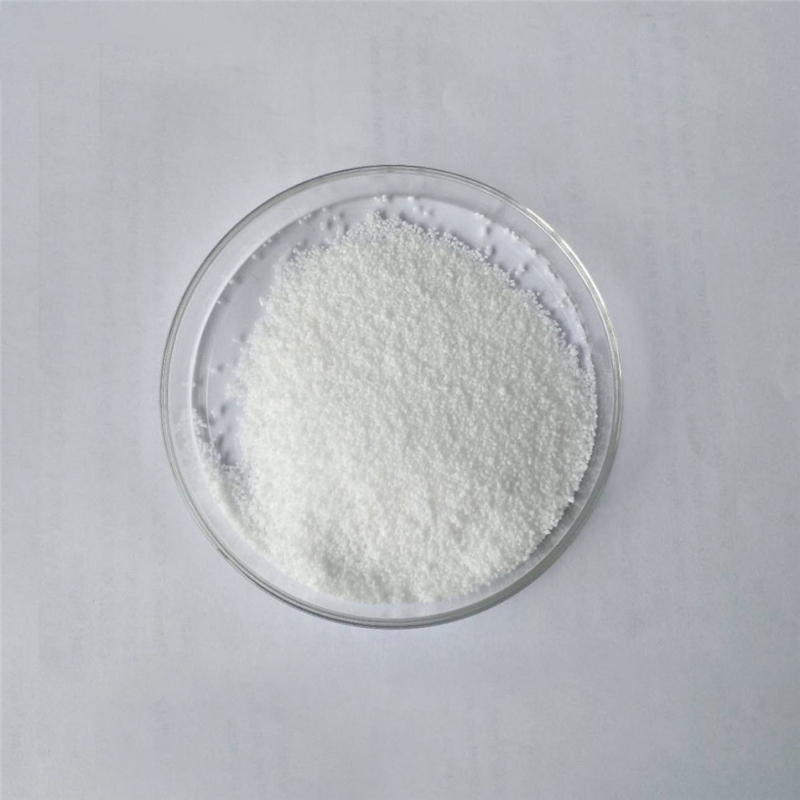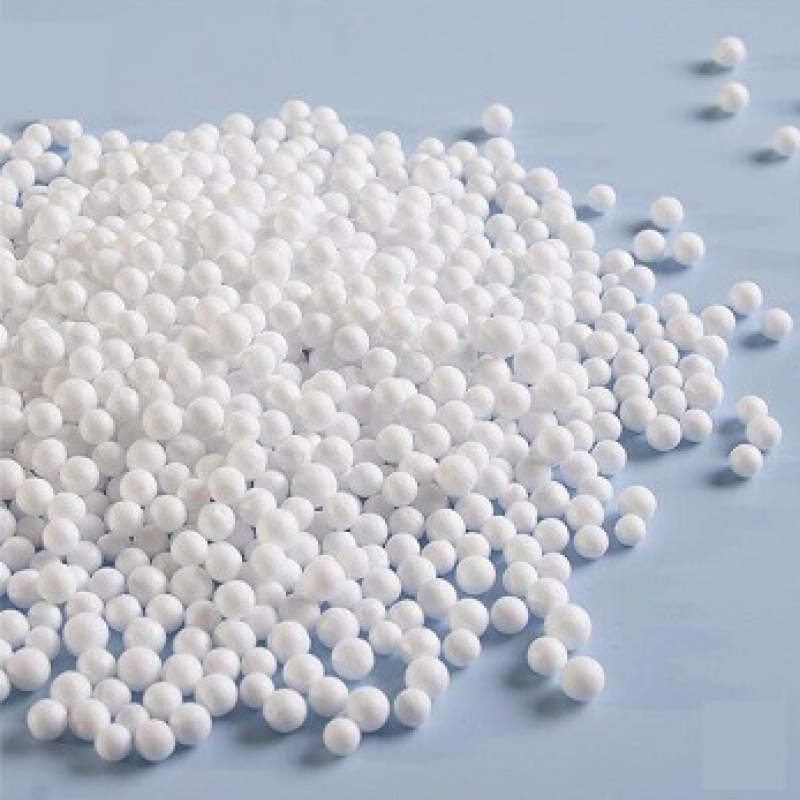Products Description of Ammonium phosphate dibasic CAS#7783-28-0Diammonium phosphate, also known as diammonium hydrogen phosphate (DAP), is a compound fertilizer containing two nutrients, nitrogen and phosphorus. Diammonium hydrogen phosphate is a high-concentration quick-acting fertilizer that is easily soluble in water and has less solids after dissolution. It is suitable for various crops and soils, especially for crops that prefer nitrogen and require phosphorus. It can be used as base fertilizer or topdressing, and deep application is recommended.
Contact Now
Products Description of Ammonium dihydrogen phosphate CAS#7722-76-1Diammonium phosphate is a highly effective fertilizer widely used in vegetables, fruits, rice and wheat.Ammonium dihydrogen phosphate Chemical PropertiesMelting point 190 °C (dec.) (lit.)Boiling point 87.4 °Cdensity 1.02 g/mL at 20 °Cvapor pressure 0.066 hPa (125 °C)RTECS TC6587000storage temp. Inert atmosphere,Room Temperaturesolubility H2O: 0.1 M at 20 °C, clear, colorlessform SolidSpecific Gravity1.803color White or colorlessPH Range3.8 - 4.4PH3.
Contact Now
Products Description of KCL CAS#7447-40-7Potassium chloride is an important fertilizer for plant growth. It has a fast fertilizer effect and can be absorbed by the soil. It is not easy to lose. Applying an appropriate amount of potassium fertilizer can make the stems of crops grow firm, prevent lodging, promote flowering and fruiting, and enhance the ability to resist drought, cold, diseases and pests. Therefore, it is of great significance to agricultural high yield.
Contact Now
Products Description of 3,4-Dimethylpyrazole phosphate CAS#202842-98-63,4-Dimethyl-1H-pyrazole dihydrogen phosphate is a yellow or white crystalline powder substance, which can be used as a new type of nitrification inhibitor and can be used in solid and liquid fertilizers.3,4-Dimethylpyrazole phosphate Chemical PropertiesMelting point 167-169°Cstorage temp. Inert atmosphere,2-8°Csolubility Methanol (Slightly), Waterform Solidcolor White to Pale BeigeStability:HygroscopicFactory and Equipment ShowFast transport timeInventory 2-3 working days New man
Contact Now
Products Description of Potassium phosphate monobas CAS#7778-77-0Potassium dihydrogen phosphate (monopotassium orthophosphate) is a water-soluble inorganic salt. Its standard enthalpy of formation is -376.1 kcal/mol.
Contact Now
Products Description of Melamine-phosphate CAS#41583-09-9White powderMelamine-phosphate Chemical PropertiesMelting point 120 - 122°Cdensity 1.74storage temp. Refrigeratorsolubility DMSO (Slightly), Methanol (Slightly)form Solidcolor WhiteWater Solubility 3.9g/L at 20℃EPA Substance Registry System1,3,5-Triazine-2,4,6-triamine, phosphate (41583-09-9)Factory and Equipment ShowFast delivery timeInventory 2-3 working days New production 7-10 working days
Contact Now
Products Description of Tributyl phosphate CAS#126-73-8Colorless, transparent liquid with pungent odor, flash point 193℃, boiling point 289℃ (101KPa), viscosity 3.5~12.2 centipoise, refractive index 1.4226 (20℃). It is miscible with common organic solvents and slightly soluble in water. The solubility of water in this product is 7% (25℃). But it will gradually hydrolyze as the temperature rises.
Contact Now
Products Description of Potassium phosphate CAS#778-53-2Potassium phosphate is a reagent with high buffering capacity, It serves as a buffering agent to regulate pH, Typically used as a component for a wide variety of media used in the culture of microorganisms, as a component in phosphate buffered saline (PBS). It occurs in several forms: monobasic, dibasic, and tribasic (K3PO4). Most pH neutral potassium phosphate buffer solutions consist of mixtures of the monobasic and dibasic forms to varying degrees, depending on the desired pH.
Contact Now
Products Description of Polyisobutylene CAS#9003-27-4Calcium phosphate tribasic (C3161) is plant cell culture tested (0.2 mg/ml) and is appropriate for use in plant cell culture experiments. Calcium phosphate tribasic is utilized to engineer new biomaterials for applications such as bone grafts and fillers. Si-substituted hydroxyapatite (Si-HAp) nanopowder can be incorporated in biodegradable polymer composites or deposited on biocompatible surfaces similar to pure HAp nanopowder (cat. no. 677418).
Contact Now
Products Description of Bis(2-ethylhexyl) phosphate CAS#298-07-7 Di(2-ethylhexyl) phosphate is a chemical substance. It is a viscous oily liquid with strong acidity.
Contact Now
Products Description of Citric acid CAS#77-92-9Zinc Phosphate (CAS#7779-90-0) is an inorganic compound that appears as a white, odorless powder. It is a zinc salt derived from phosphoric acid and is characterized by its stable properties and low solubility in water. The chemical formula for Zinc Phosphate is Zn3(PO4)2, and it has a molecular weight of 422.12 g/mole. This compound is commonly used as a corrosion inhibitor, particularly in primer paints due to its ability to provide cathodic protection.
Contact Now
Products Description of Ammonium sulfate CAS#7783-20-2Ammonium sulfate, also known as ammonium sulfate, is the earliest nitrogen fertilizer produced and used at home and abroad. It is usually regarded as a standard nitrogen fertilizer with a nitrogen content of 20% to 30%. Ammonium sulfate is a salt of strong acid and weak base, and its aqueous solution is acidic. Ammonium sulfate is a nitrogen fertilizer and an acidic fertilizer among inorganic fertilizers. Long-term single use will cause soil acidification and hardening, which needs to be improved.
Contact Now
Products Description of ZIRCONIUM(IV) HYDROGENPHOSPHATECAS#13772-29-7Zirconium phosphate (ZrP), also known as zirconium hydrogen phosphate, has a chemical formula of Zr(HPO₄)₂.2H₂O and is a fine phosphorus chemical product. Zirconium phosphate has a white powder appearance, an acidic pH value, stable chemical properties, is insoluble in water, insoluble in general organic solvents, has good acid and alkali resistance, has high thermal stability and mechanical strength, and is widely used as a solid lubricant in self-lubricating composite materials.
Contact Now
Products Description of BIS(2-Methacryloxyethyl)phosphate CAS#32435-46-4 BIS(2-METHACRYLOXYETHYL) PHOSPHATE Chemical PropertiesBoiling point 221 °C(lit.)density 1.28 g/mL at 25 °C(lit.)refractive index n20/D 1.47(lit.)Fp >230 °Fstorage temp. 2-8°Cpka1.29±0.50(Predicted)EPA Substance Registry System2-Propenoic acid, 2-methyl-, phosphinicobis(oxy-2,1-ethanediyl) ester (32435-46-4)Safety InformationHazard Codes XiRisk Statements 36/37/38Safety Statements 26-36WGK Germany 3HS Code 29199000Product Applicati
Contact Now
BIS(2-METHACRYLOXYETHYL) PHOSPHATE Chemical PropertiesBoiling point 221 °C(lit.)density 1.28 g/mL at 25 °C(lit.)refractive index n20/D 1.47(lit.)Fp >230 °Fstorage temp. 2-8°Cpka1.29±0.50(Predicted)EPA Substance Registry System2-Propenoic acid, 2-methyl-, phosphinicobis(oxy-2,1-ethanediyl) ester (32435-46-4)Safety InformationHazard Codes XiRisk Statements 36/37/38Safety Statements 26-36WGK Germany 3HS Code 29199000Product Application of BIS(2-METHACRYLOXYETHYL) PHOSPHATE CAS#32435-46-4 Used in resin and
Contact Now
Products Description of Calcium Ammonium NitrateCAS#15245-12-2Calcium ammonium nitrate is a nitrogen fertilizer made by melting ammonium nitrate with a certain proportion of limestone and dolomite powder. The ingredients are a mixture of NH4NO3, CaCO3 and MgCO3. Calcium ammonium nitrate contains 21% to 26% nitrogen (N), and is grayish white or light yellow granules or powder. The aqueous solution is weakly alkaline.Calcium ammonium nitrate is the world's most soluble calcium-containing chemical fertilizer.
Contact Now
Products Description of Polyisobutylene CAS#9003-27-4Potassium sulfate (K2SO4) is a kind of chemical compounds that is commonly used in agriculture. The dominant application of potassium sulfate is as a fertilizer, which is commonly applied to offer both potassium and sulfur, thus improving the quality and yield of crops growing in soils that lack an adequate supply of this essential elements. Besides, the crude potassium sulfate is sometimes employed in the production of glass.
Contact Now
Products Description of Ammonium Superphosphate (SSP) CAS#7758-23-8Ammonium Superphosphate (SSP), with the CAS number 7758-23-8, is a highly effective fertilizer used in agriculture to enrich soil with essential phosphorus and nitrogen.
Contact Now
Products Description of Sodium hydrosulfideCAS#16721-80-5Sodium hydrosulfide is used in the dye industry to synthesize organic intermediates and as an auxiliary agent for preparing sulfur dyes, in the leather industry to dehair and tan leather, in the fertilizer industry to remove monomer sulfur in activated carbon desulfurizers, in the mining industry to be used in large quantities for copper ore dressing, in the production of artificial fibers for sulfite dyeing, etc.
Contact Now
Products Description of Potassium phosphate CAS#778-53-2Azodicarbonamide is a synthetic chemical that exists at ambient temperature as a yellow-orange crystalline solid. Azodicarbonamide is mainly used as a blowing agent in the rubber and plastics industries in the expansion of a wide range of polymers, including polyvinyl chloride, polyolefins, and natural/synthetic rubbers.
Contact Now
Products Description of Bisphenol-A bis CAS#5945-33-5Bisphenol A Bis(diphenyl phosphate) is a flame retardant.
Contact Now
Products Description of Nicotinamide CAS#98-92-0Nicotinamide, also known as nicotinamide, vitamin B3 or vitamin PP, is a water-soluble vitamin belonging to the B vitamins. It is a component of coenzyme I (nicotinamide adenine dinucleotide, NAD) and coenzyme II (nicotinamide adenine dinucleotide phosphate, NADP).
Contact Now
Poly(oxy-1,2-ethanediyl), .Alpha.-Hydro-.Omega.-Hydroxy-, Mono-C12-14-Alkyl Ethers, Phosphates CAS#68511-37-5The molecular structure contains polyoxyethylene segments, hydroxyl groups, C12-14 alkyl ether and phosphate groups. This unique structure enables it to have multiple properties. It has good surface activity, can reduce the surface tension of the liquid, and play the role of emulsification, dispersion and wetting at the interface.
Contact Now
Products Description of D-(-)-ERYTHROSE CAS#583-50-6D-erythrose-4-phosphate is an intermediate in the enzymatic conversion of carbohydrates.D-(-)-ERYTHROSE Chemical PropertiesMelting point <25℃Boiling point 144.07°C (rough estimate)alpha D20 +1° -14.5° (3 days, c = 11)density 1.0500 (rough estimate)refractive index 1.498storage temp. 2-8°Csolubility Methanol, Waterform syruppka12.49±0.20(Predicted)color light yellowWater Solubility Fully miscible in water.Sensitive HygroscopicMerck 14,3690BRN 1721698CAS DataBase Reference
Contact Now

































